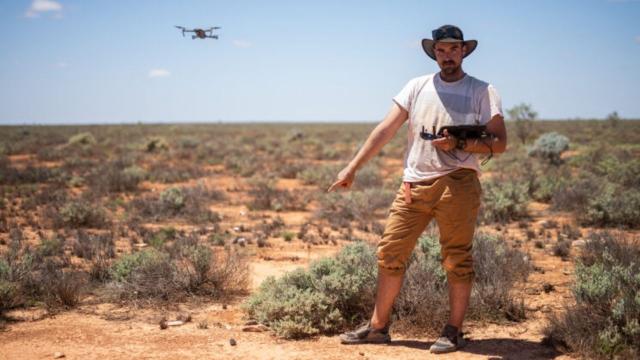Researchers from Curtin University are using drones and artificial intelligence to hunt for meteorites in Outback Western Australia.
The new technique has been developed by lead researcher Seamus Anderson from Curtin’s Space Science and Technology Centre, which saw a successful demonstration of the method late last year.
“A camera-fitted drone flies over and collects images of the fall zone, which are transferred to our field computer where an algorithm scans each image for meteorites and features that resemble them,” says Anderson.
“Although our algorithm was ‘trained’ on data collected from past meteorite searches, we brought with us previously recovered meteorites and imaged them on the ground at the fall site, to create local data with which to further train the algorithm.”
So in basic terms, the drone flies over the area researchers have roughly determined as being a meteorite crash zone, taking pictures and sending them back to the team. The team then analyses the terrain with AI to observe for signs of meteors. If a meteorite is detected, the team will know and go pick it up.
Meteorites, mind you, can be quite difficult to find. Only about five per cent of meteorites travelling into Earth’s atmosphere make it to the ground (most burn up). Those that survive are usually quite small, ranging from the size of a pebble to a fist.
“Meteorite searches usually involve a group of people walking over a large predicted impact area but our new method requires only about one-tenth the amount of labour and time and has a much higher likely success rate, which is evident in the fact we located and recovered the meteorite within four days of being on-site at Kybo Station,” added Anderson.
Drones are typically used in observational roles like this – considering they’re able to observe the ground from up high without the cost of something like a plane or a helicopter, it’s a pretty low-cost solution to things like this. We’ve often seen drones in roles like this, but we’ve also seen them in bushfire protection and in photography.
Drones are actually becoming such a widespread and widely-adopted thing that researchers at the University of South Australia have developed sound detection tools for detecting drones at a distance. Of course, a big part of this is the military aspect of drones.
Anyway, back to drones detecting meteorites in the Outback, this builds on top of a really cool sounding research network – the Desert Fireball Network (DFN), which detects meteorite crashes across the Australian Outback with high tech cameras. It produces 4TB of data every day.
This new research should enhance the study and retrieval of meteorites across Australia’s open Outback, allowing for cheaper and quicker retrieval.
“Beyond increasing our understanding of the solar system, the study of meteorites is useful for many reasons. For example, meteorites often contain a higher concentration of rare and valuable elements such as cobalt, which is crucial to the construction of modern batteries,” says Anderson.
“Also, by gaining a better understanding of how extra-terrestrial material is distributed throughout the solar system, we may one day mine asteroids for precious resources, instead of scrounging for the finite amounts of them on Earth and perhaps harming precious ecosystems in the process.”
If you’d like to read about meteorite-hunting drones in the Outback, the full research paper has been published here.
